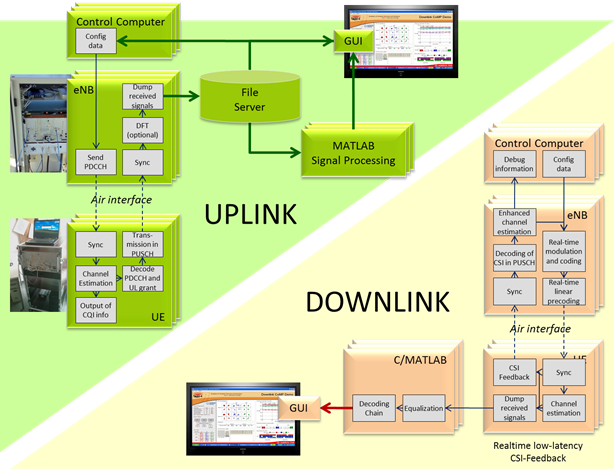

UPLINK For the uplink, LTE uses the DFTS-OFDMA (discrete Fourier transform spread orthogonal frequency division multiple access) scheme to generate a SC-FDMA signal. Where 31 subtraction from TA exists in the above equation to allow eNodeB to shit the timing advance in both positive and negative directions.įor UE closer to the eNodeB, negative Timing Advance command can be used. downlink and uplink, LTE utilizes the optimal way to do wireless connections in both of the ways which makes a better optimized network and better battery life on LTE devices.
UPLINK AND DOWNLINK IN LTE MAC
The timing advance command within the MAC Control Element corresponds to TA within the equation: Thus, the eNodeB must consider the current. Therefore, for 6 bits timing advance (TA) command in this case has a range from 0 to 63. Downlink and uplink have a radio link with a time variant nature, due to the fast fading phenomenon, as said before. Out of 8 bits 6 bits are used to signal the timing advance command (when UE is RRC connected). The Timing Advance Command within MAC Control Element forms part of the MAC PDU payload. These subsequent timing advance commands provided within the MAC Control Elements are relative and define changes to existing timing advance compared to absolute TA. Below figure shows MCS index and Modulation Order which describes the type of modulation (2 for QPSK, 4 for 16QAM and 6 for 64 QAM). Abstract: Long Term Evolution Advanced (LTE-A) supports a wide range of applications that. FDD, and LTE bands between 33 & 41 are for unpaired spectrum, i.e. In the past two decades, there has been a drastic increase in the mobile traffic, which is caused by the improved user experience with smart phones and its applications. Currently the bands between 1 & 22 are for paired spectrum, i.e. Channel Aware Scheduling Algorithm for LTE Uplink and Downlink. The combination of Modulation and Coding rate is called Modulation Coding Scheme (MCS). Joint uplink-downlink carrier aggregation scheme in LTE-A. FDD spectrum requires pair bands, one of the uplink and one for the downlink, and TDD requires a single band as uplink and downlink are on the same frequency but time separated. Timing advance (TA) in lte Timing advance is used to control the Uplink Transmission timing of Individual UE. Once UE gets RRC connected, then timing advance changes are signalled using the Timing Advance Command MAC Control Element. LTE uses different coding rate with QPSK, 16 QAM and 64QAM. The Uplink and Downlink are then synchronized at the eNodeB.

The timing advance command provided during Random Access Phase is an absolute timing advance command.


 0 kommentar(er)
0 kommentar(er)
